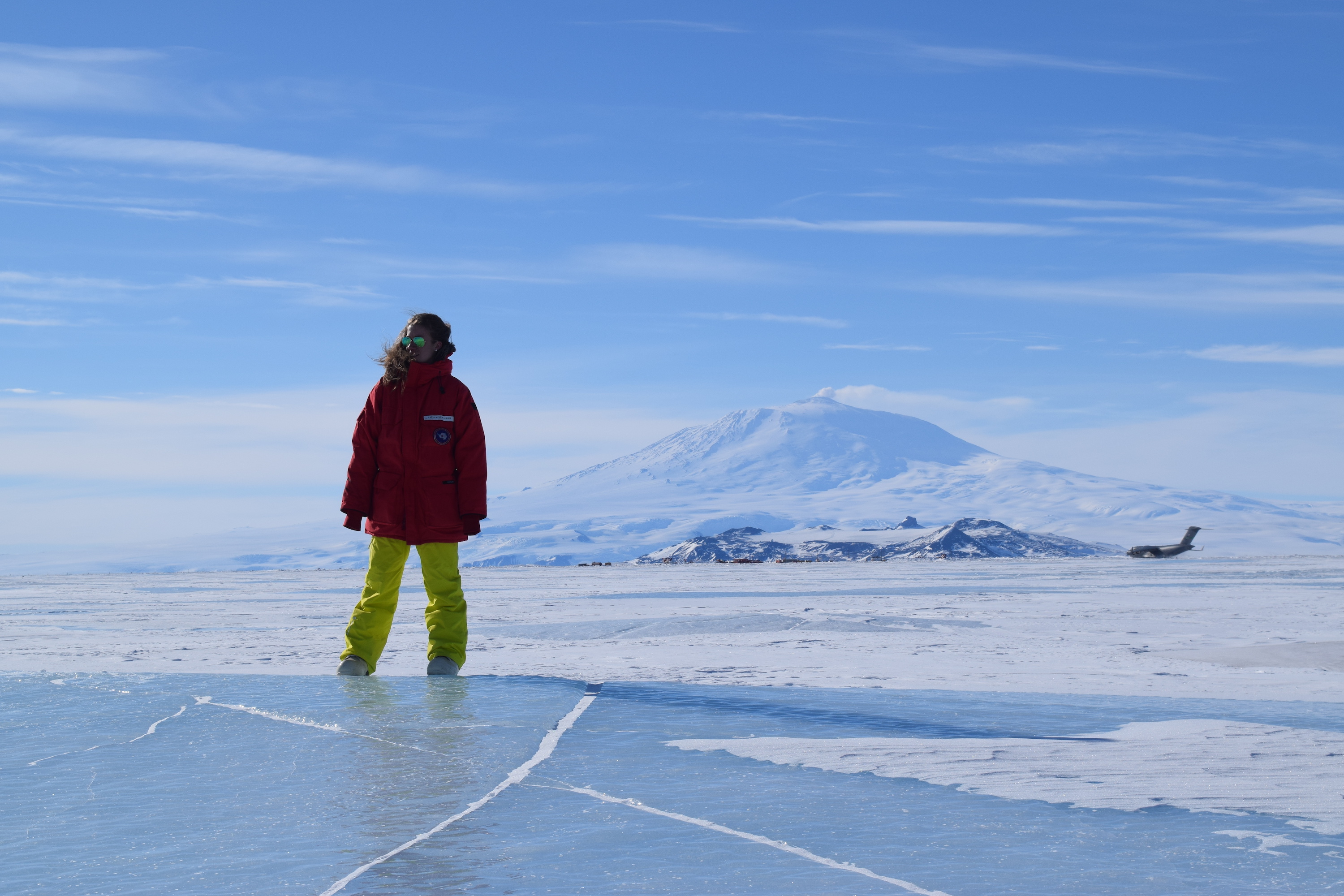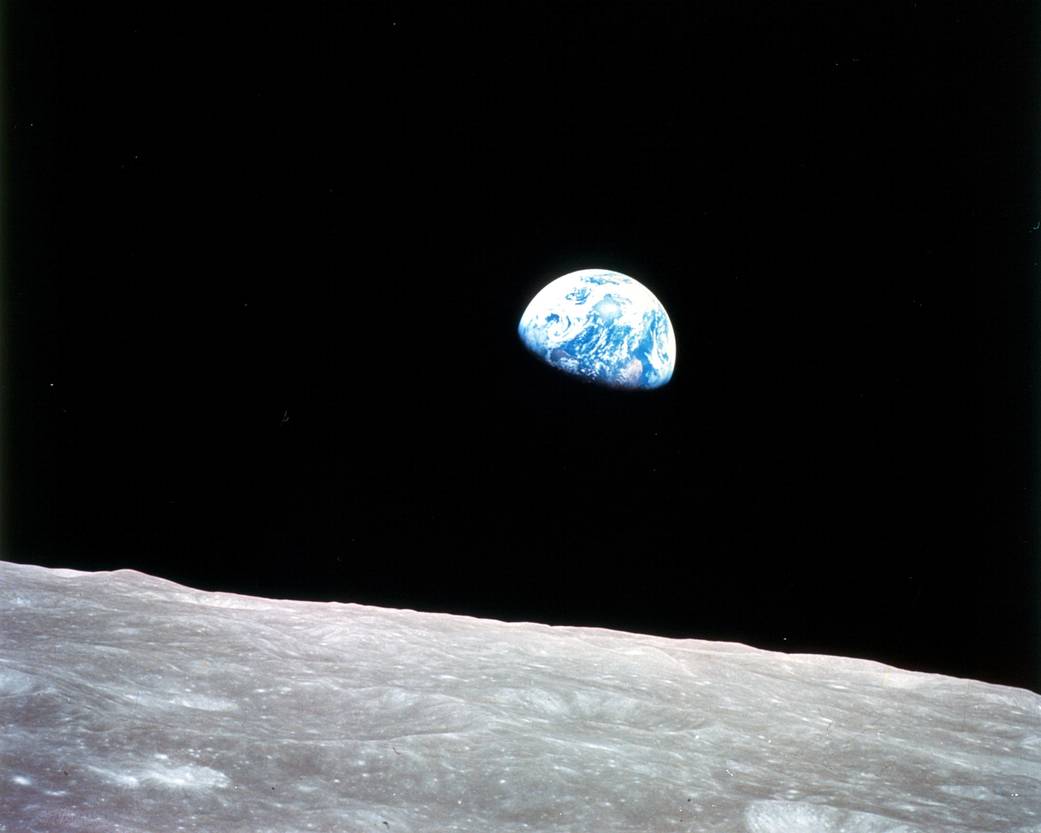
Catherine Walker
Glaciologist
I am originally from North Andover, Massachusetts, a small town of about 25,000 people north of Boston. It was actually home to more accused witches during the Witch Trials than Salem, Massachusetts, but Salem gets all the (bad) attention. I also spent about half of my time in Wells Beach, Maine (an even smaller town, particularly in the winters). No matter where I live, I consider myself a New Englander at heart.
I saw a picture of Neptune in my dad’s National Geographic magazine when I was about 4 or 5 and thought it was an entire planet made of an ocean (it’s blue). Turns out it’s not water, but that was the first time I remember seeing a picture from outer space (from the Voyager mission at the time).
We lived right on the ocean in Maine, and it’s always been somewhere I wanted to explore. I grew up spending hours and hours collecting beach rocks, much to my parents’ frustration, and breaking them open to see what was inside. Rocks seem boring, but if you really think about it, most of the beach rocks (in Maine, at least) are metamorphic rocks. They’ve been around for a really long time (likely thousands of years), and when you break one open, you’re the first person ever to see what’s inside. That was always fascinating to me. Every rock is a new place and time to explore.
I always liked outer space and rocks, and probably bored my parents, sister and any friends I had to death by always presenting them with factoids about planets or pieces of rocks that I’d collected. I figured out I could study those things for a living, so I stuck firmly to that track.
What really solidified my fate was when I saw the movie Apollo 13, when I was about 11. I decided then and there that I wanted to be an astronaut when I grew up, and for one reason or another, that dream never faded. While the path hasn’t been easy (in fact, I have found it extremely challenging), I still hope to see space for myself someday. In the meantime, though, I am excited that I get to explore using satellites and remote-observing techniques until I get the chance!
A lot of people inspire me; it’s hard to name them all individually. I focus mostly on who inspires me as a human being, rather than solely as a scientist, because I think those things are one and the same.
I am inspired by people who overcome real hurdles and treat others better than they were treated — who go above and beyond the Golden Rule. Some are historical figures — for example, Catherine of Aragon, first wife of Henry VIII, who survived many indignities but continued to see good and find hope in the world.
But most are everyday people, like the woman I met in the airport this morning, who had just lost her mother yesterday but offered her seat to a fellow traveler who had missed his connection. My grandmother had multiple sclerosis and couldn’t move or speak clearly for the last part of her life, but she was always smiling, and I never heard a complaint. Also, people who inspire me fight for small rebellions of happiness and success against odds.
Most of all, my parents, who worked hard all their lives, often sacrificing their own happiness (and perhaps mine and my sister’s) for the people they served, without begrudging them. They taught me two sayings that I try to remember every day: “Everybody has their cross to bear,” and “Treat everyone you meet as if they are having a worse day than you are.” Of course, these are variants of the Golden Rule.
My job is pretty fun! It can change day to day, but let’s face it, most of the time I am sitting at a computer. But on that computer are images from space, or data taken from space, or analyses of data from space. So, I like to think of myself as a desk-chair astronaut.
I spend a lot of time scanning satellite images of different places on Earth (for example, Antarctica) and in the solar system (for example, Europa). I look for features that I can interpret, asking questions like, how did that crack get there? How fast is the ice moving? When did this lake form? And I try to understand why things are the way they are. What’s important is that, once you’ve spent enough time doing things like this, you end up noticing patterns or similarities, and that leads you to even more questions.
I spend some of my time in meetings, of course. My favorite meetings are those where colleagues present some of their work. Since we each work on different topics, it is a lot of fun to see what amazing things are going on just down the hallway. I think my job is pretty fun, because it is basically like what I used to do as a child picking up beach rocks. I see something interesting and say, how did that get there? Then I get to investigate!
I have two favorite moments, and they are slightly different in nature. My most favorite moment was landing on the Antarctic Ice Sheet in a U.S. Air Force plane, walking off and seeing pure white. It was the most amazing experience; I will never forget it. My second favorite moment, so far, was the time I got to watch Apollo 13 (the movie) in the Control Room at Johnson Space Center — literally the room where all of the chaos occurred. It was pretty surreal.
I am most looking forward to doing more fieldwork — going back to Antarctica, and hopefully getting out to sea. I love looking at satellite data, but there’s something about getting outside and investigating Earth in person that you just can’t beat.
Given the small likelihood of becoming an astronaut, I always tell myself that exploring Earth is basically the next best thing! It’s just an amazing experience to be out and among Earth’s many wonders. For a kid from a small town, I never imagined I’d get to actually go to the places I’ve been, and I’m looking forward to more of those experiences.
The best advice I could give someone would be to keep on going, even if someone tells you that maybe you’re not good enough or something else might be easier. I’ve had a lot of frustrations and setbacks, admittedly, and sometimes think to myself that maybe these are signs that I’m just not cut out for this field.
But, in the end, it’s all I ever wanted to do, so sometimes I just go back to the beach and pick up rocks and think to myself, “Let’s just keep on going.” Do the very best you can, and if it doesn’t work out, well, you did all you could. Never leave anything on the table. And don’t base your opinion of yourself on other peoples’ assessments of you.
My favorite activity is downhill skiing. Growing up in New England, I prefer East Coast skiing, but I know a lot of folks disagree! My parents started us skiing when we were 2, and my dad made us sleep with our ski boots on. To say the least, it’s an engrained part of my life.
Otherwise, I mostly like to do anything that allows me to spend time with my dogs, Chewie and Wall-E, especially if it’s outdoors. We love to hike, run and explore new places. They travel everywhere with us. Travel has become an unexpected perk of being a scientist; you get to go to all these different places around the world, so I try to take advantage of those opportunities as much as I can. And I’d be remiss if I didn’t say I like to spend time at Disneyland.
My favorite space image is one and the same: It’s the “Earthrise” image taken by the crew aboard Apollo 8 in December 1968. I think a lot of people pick this one. Despite its popularity, the reason it’s so special to me is that it’s a testament to so many things coming together at once.
First, it was the first time humans left Earth’s gravity and saw Earth from the orbit of another planetary body. It was a humongous technological and scientific achievement. Second, those three astronauts were brave enough to accept that this was a new frontier and there was no guarantee of coming home or being rescued. Despite the stakes, the fact that they could capture an image such as this one was remarkable. Third, 1968 in the United States was rough to say the least; times were changing and tumult abounded.
But, in the end, Apollo 8 could send this picture back to Earth to remind us all that, in reality, this is all we have — this little ball, mostly covered in water, protected from space by that tiny, thin layer of atmosphere. As Astronaut Jim Lovell said, "The vast loneliness is awe-inspiring and it makes you realize just what you have back there on Earth."

Planetary science is a global profession.

